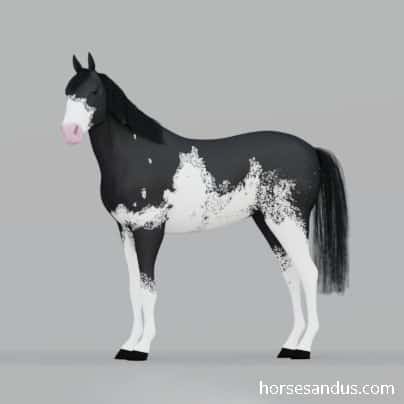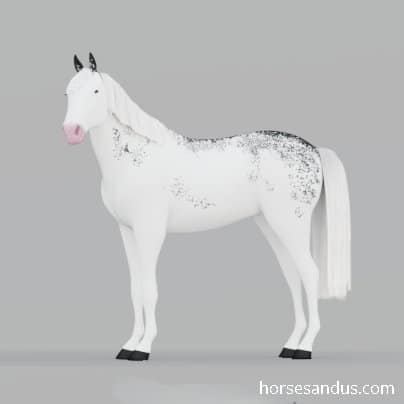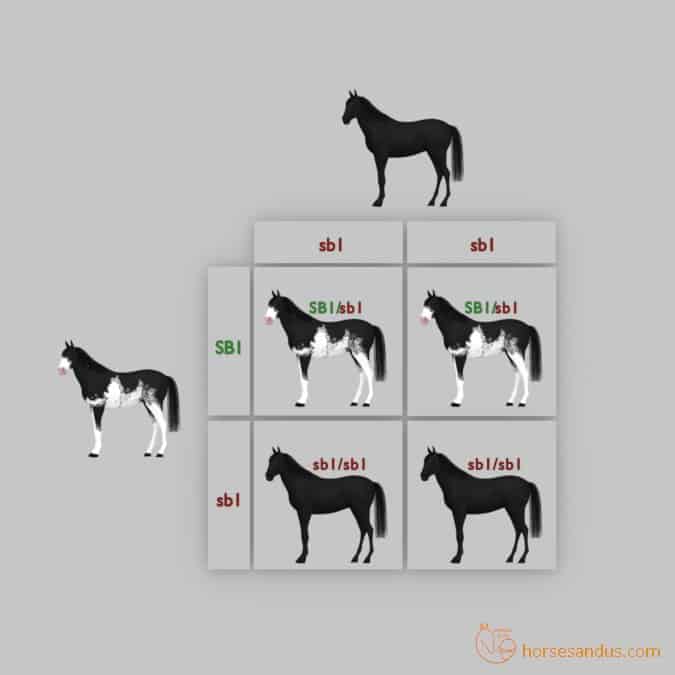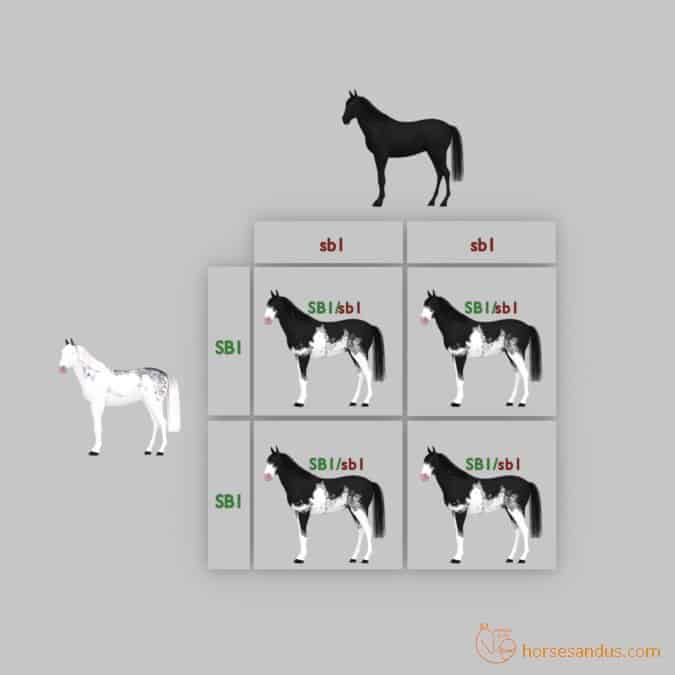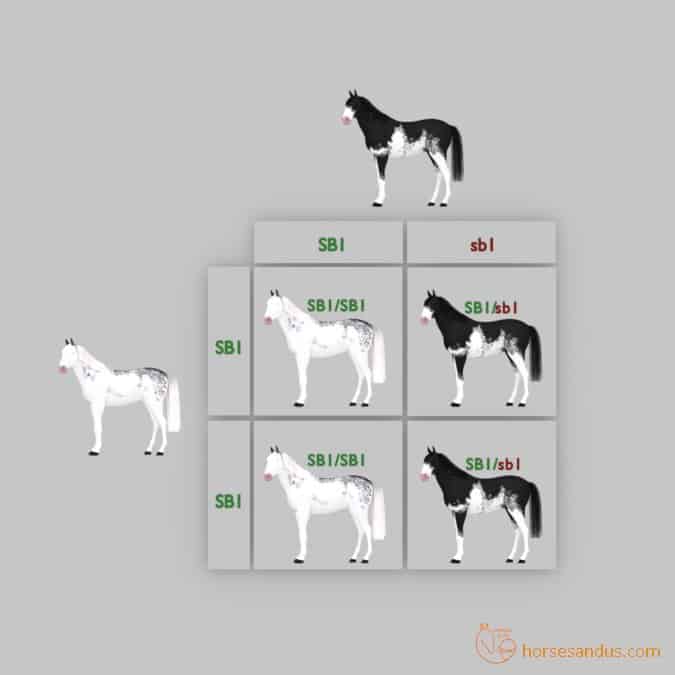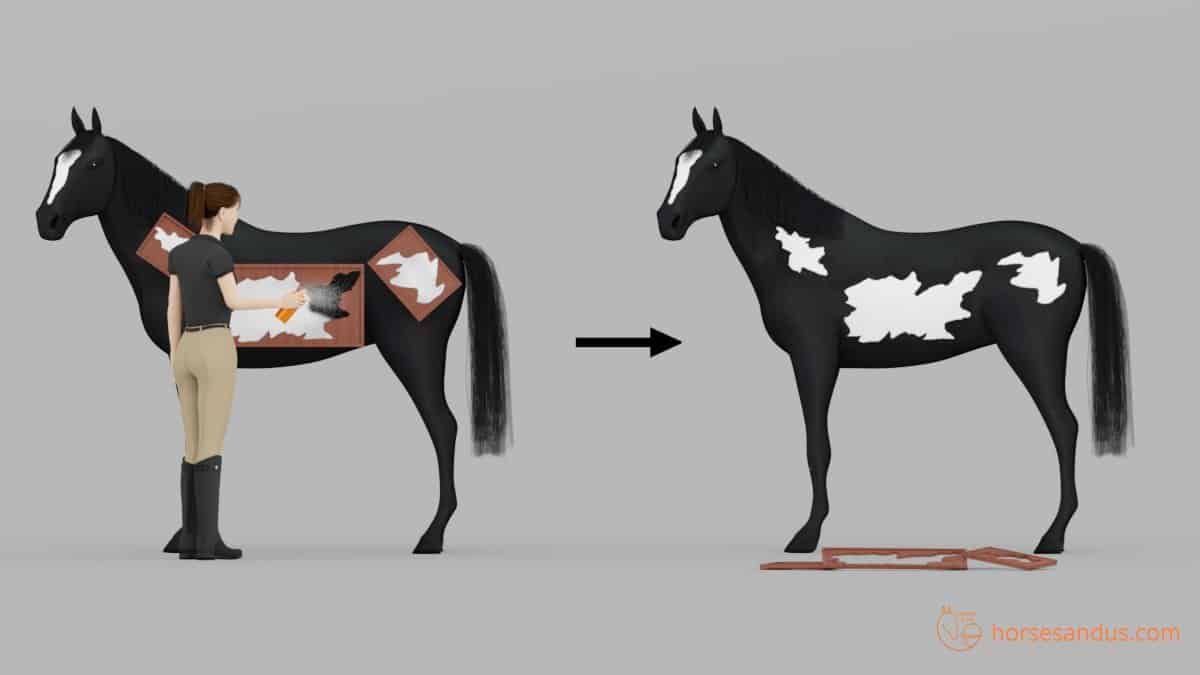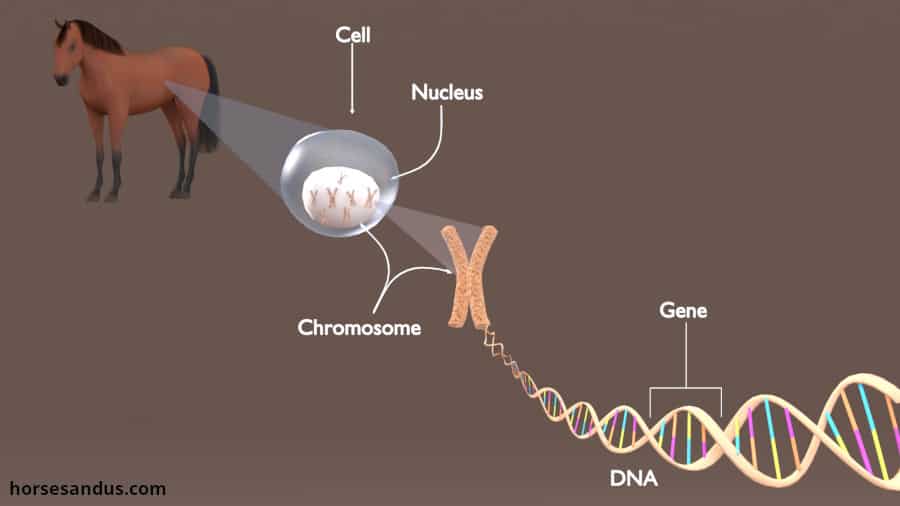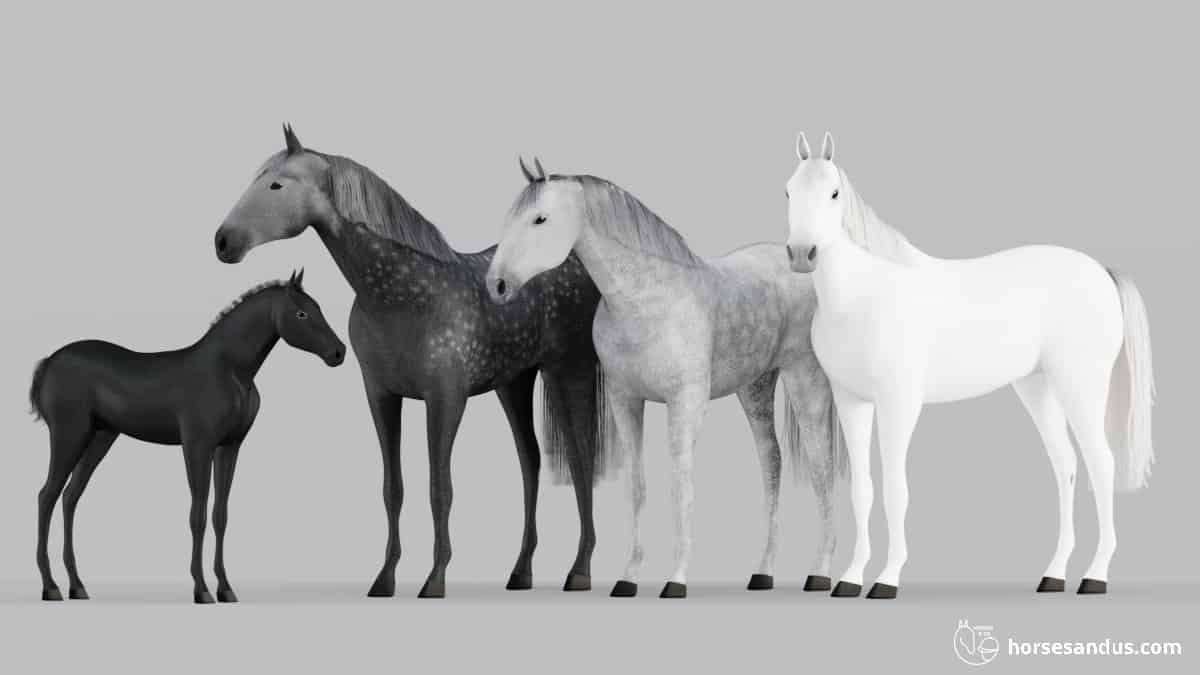A Sabino horse is characterized by irregular white markings with speckles and “roaning” around the edges. It has tall white spotting on the legs, a blaze on the face, and white patches with roaning on the belly and flank. Sometimes the roaning is scattered throughout the coat.
A Sabino horse looks like it ran over a puddle of white paint and got sprinkled on the body.
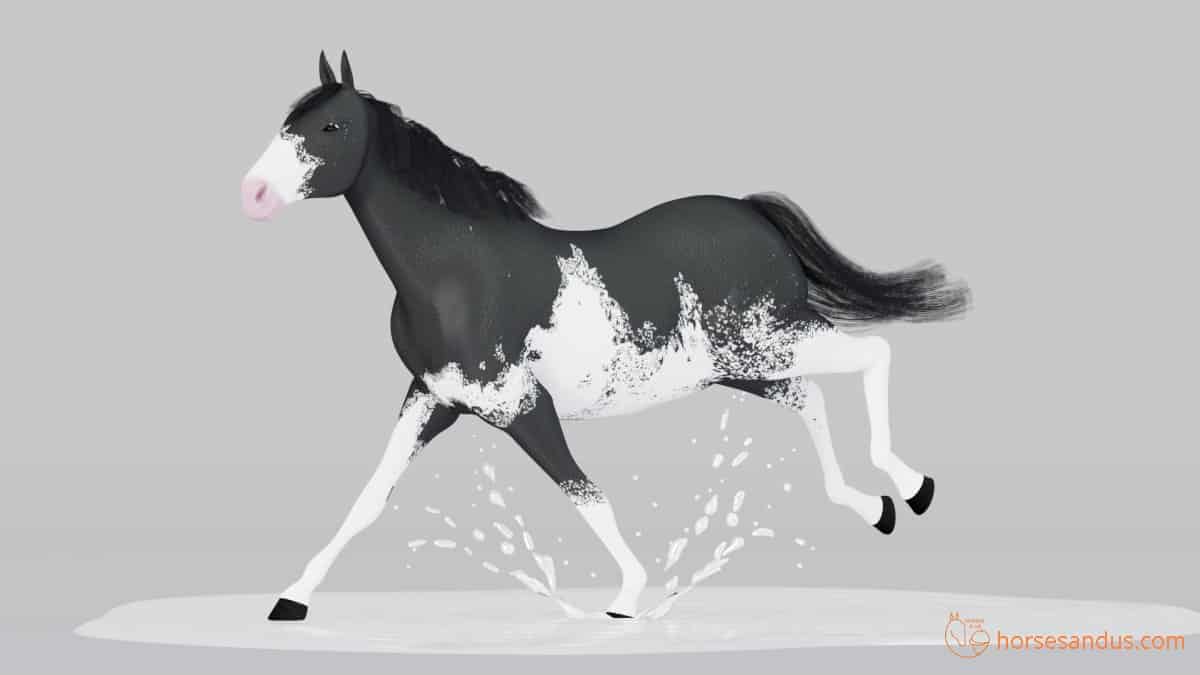
Sabino is a pattern from the Overo Family, and sometimes it is referred to as Overo instead of the more specific Sabino designation.
There is a wide variety of horse coat colors and patterns. In this article, we will look at the patterns produced by the Sabino gene.
Characteristics Of Sabino Horses
The following characteristics will help you identify a Sabino horse
- The white patches are usually on the belly or flanks with speckled or roaned edges. In rare cases, the edges can be smooth.
- The skin is pink beneath the white patches and dark beneath the colored areas.
- Often all legs are white, but one or two can be colored.
- The face has irregular white markings.
- The eyes can be brown or blue, but they are typically brown even when the pink skin is present around the eyes.
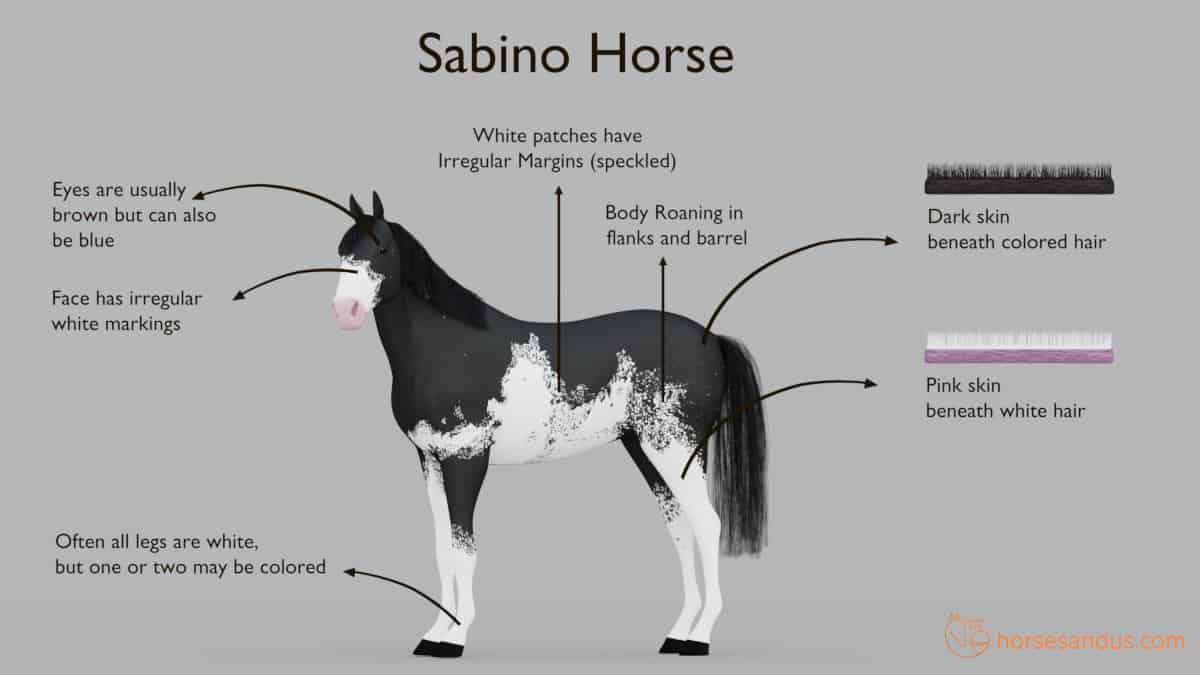
The Sabino pattern can occur with any base coat color (black, chestnut, bay) or diluted coat color (dun, cream, silver, or champagne).
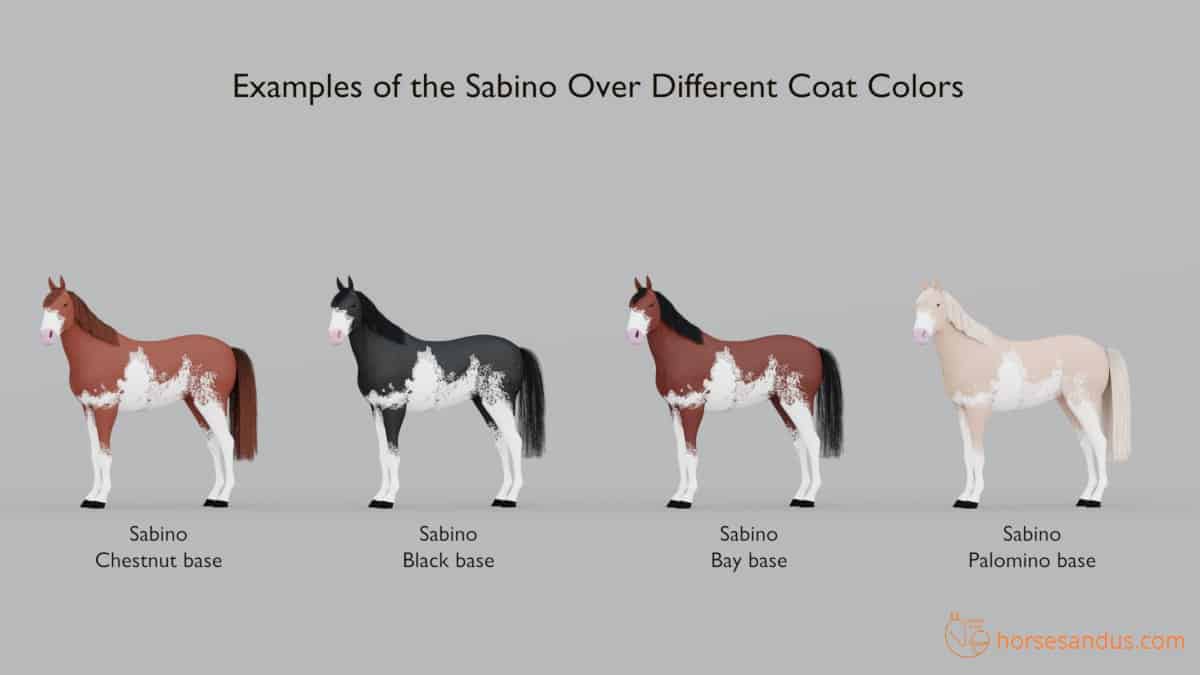
It can also exist in conjunction with other white patterns (Frame, Tobiano, Splashed White, Dominant White, Leopard Complex, or Roan).
Additionally, Sabino horses can progressively whiten as they age due to the action of the Grey gene.
Variability Of The Sabino Pattern
Like any pattern, the expression varies. The expression of the sabino pattern can range from a horse with minimal markings on the face and legs to a completely white horse.
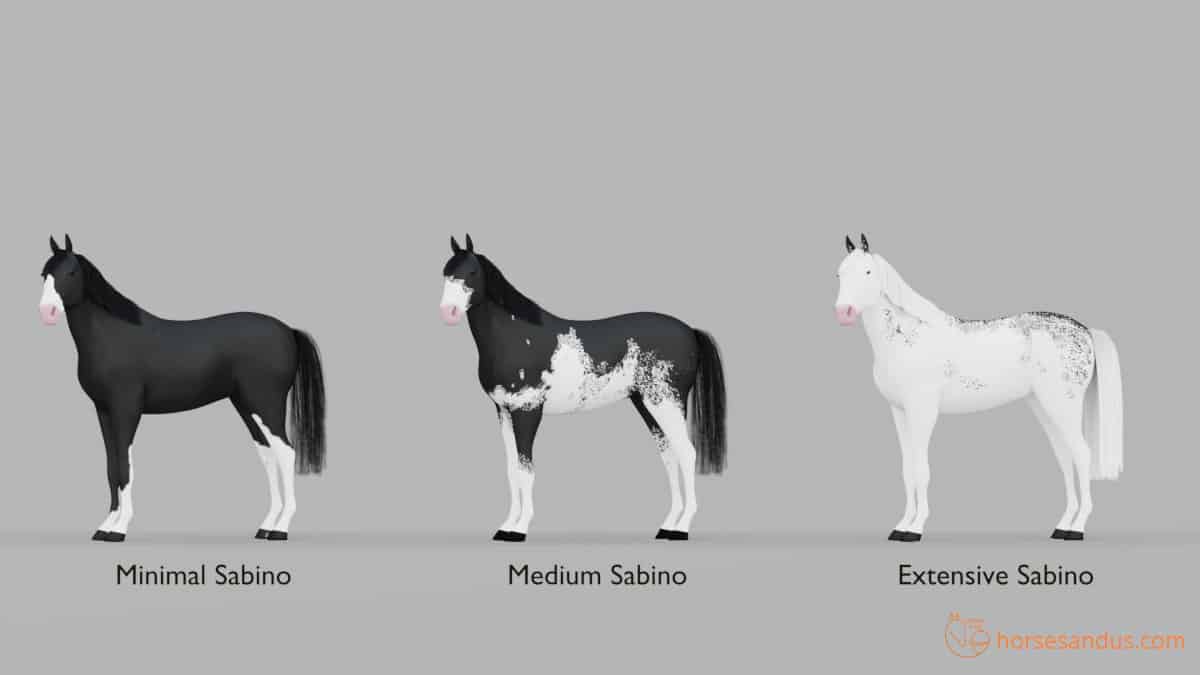
Minimal Sabino will have narrow extensive white markings on the legs and down the throat, often called “lightning strikes.” These white patches usually have crisp edges making it difficult to identify the Sabino pattern. However, many minimal Sabinos will be very lightly roaned on the flanks and belly, which can help identify the Sabino pattern.
Most minimally marked horses do not have white patches on the body. The white areas exist only on the legs and face. These horses are rarely recognized as being sabino
Medium Sabino pattern is relatively easy to identify because it will show the characteristic spotting of this pattern.
Extensive Sabino pattern is variable. Some horses will have small flecks of color all over the coat, while others will be entirely white. Still, others will be white with colored ears, chest, tail base, and along the topline. These colored areas will typically be speckled.
Other Names Used For Sabino Horses
Sabino horses are often referred to by other names.
Various names characterize the pattern’s “roaning”
The Sabino pattern is called many names such as calico, speckled or flecked.
Within the Arabian breed, this pattern is known as particolored.
Welsh Ponies with the minimal pattern are called “with roaning”
The more roaned variants of the sabino are also called buttermilk roan or Spanish roan.
However, not all manifestations of this pattern are speckled or roaned. In some cases, the white patches have smooth edges.
Piebald and Skewbald
Piebald and skewbald are both terms often used to describe white patterns on a colored horse. These terms apply to Sabino since it is a white pattern.
Piebald is a horse with white patterns on a black base coat.
Skewbald is a horse with white patterns on a non-black coat, such as chestnut, bay, palomino, buckskin, dun, and so on. That is, on any coat color (base or diluted) other than black. A skewbald on a bay coat is also called tricolored because there are three colors: white, brown, and black.
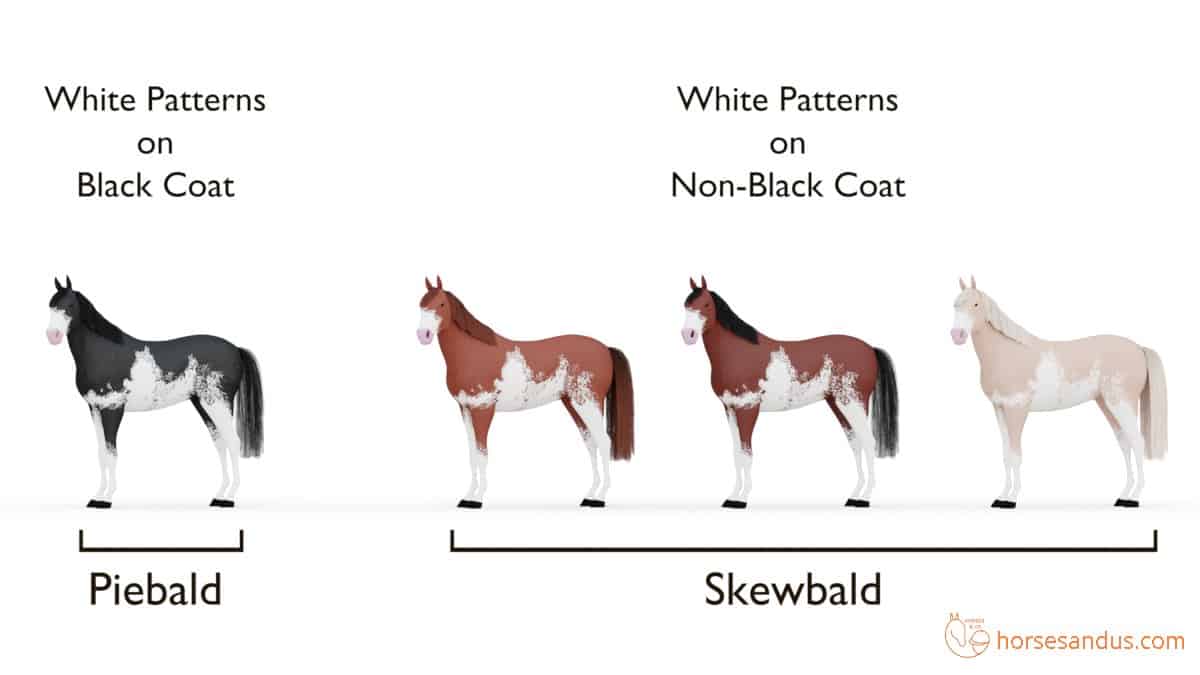
Pinto and Paint
Both Pinto and Paint refer to horses with white patterns and any other color (black, bay, chestnut, or any dilution like, for example, palomino).
The difference is that a Pinto horse can be from any breed, whereas a Paint horse refers to a specific breed with this name.
Similarities And Coexistence With Other White Patterns
A wide variety of color patterns are sabino-like even when they do not carry the sabino mutation. However to be rigorous, in this article sabino refers to the white patterns produced by sabino 1 (SB1) mutation in the KIT gene.
Similarities
The Sabino pattern is similar to Splashed white. They both have white feet and faces. However, sabino horses have rough speckled edges, while splashed horses have smooth, well-defined edges. But they are usually confused when the sabino horse has less roan in the pattern.
Sabino horses that have white patches with smooth, well-defined edges can be easily confused with Frame horses when these have white marks on the legs.
Due to the “roaning” on the edges of the white spots characteristic of the Sabino horses, these are sometimes mistaken for Roan horses. However, the white on the legs and faces of the Sabino horses will allow them to be distinguished from Roans.
The Extensive Sabino pattern, which is solid white with pink skin and dark eyes, can be confused with the Dominant White pattern.
Coexistence
The Sabino pattern can also occur in conjunction with other white patterns, making it sometimes impossible to identify.
When more than one white pattern exist together, the extension of white areas is larger due to the additive effect of the white pattern genes, i.e., the white areas of each white pattern are added together.
In these cases, DNA testing is the only way to determine if the horse carries the Sabino1 mutation of the KIT gene.
The Genes Behind The Sabino

The KIT gene in horses is responsible for many different white patterns. These white patterns can be grouped into four different variants of the Kit gene: Sabino(SB1), Tobiano(TO), Roan(RN), and Dominant white(W)
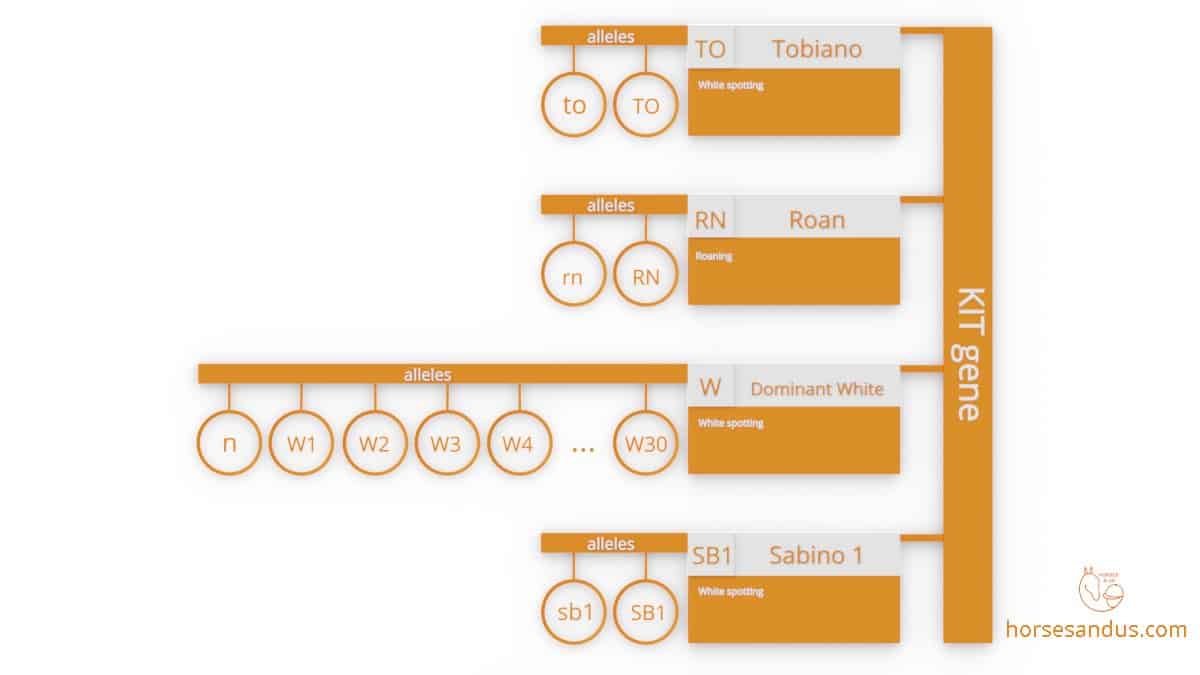
The Sabino white pattern is the result of the Sabino1 mutation on the KIT gene.
It is identified as SB1. The absence of sabino is identified as sb1.
Sabino 1 is an incomplete dominant allele, which means that heterozygotes (only one copy of the dominant allele, SB1/sb1) have less pronounced expression than homozygotes (two copies of the dominant allele SB1/SB1).
We can group the Sabino1 pattern into two different categories:
The names of alleles for Sabino-like patterns
Sabino1 was identified in 2005. The researchers gave the allele the name Sabino1 because they thought they would find more alleles and then would name them Sabino2, Sabino3, and so on.
However, the next allele that was found on the KIT gene caused a dominant white trait. So the allele was named W1. The following alleles found on the KIT gene also produced the dominant white trait, and so they were called W2, W3, … and so on.
After that, more alleles discovered on the KIT gene were given a name on the W series, even the ones that had sabino-like patterns. Perhaps some of these alleles should have been named Sabino instead of White.
So most probably, the Sabino 2 will never be named, and if more sabino-like alleles are found, they will likely be named within the W series.
There are many alleles responsible for the sabino-like pattern, but they are named within the W series (e.g., W5, W10, W21).
The allele for the trait described in this article is named Sabino1 (SB1).
Sabino genes inheritance
Since Sabino(SB1), Dominant White(W), Tobiano(TO), and Roan(RN) are all white patterns produced by the same KIT gene, only two can be present in a horse (one from the sire and another from the dam).
So, for example, we can have genotypes with only the Sabino allele SB1/SB1 or SB1/sb1 or genotypes that cross different traits in the KIT gene, like, for example, SB1/TO, SB1/W1, or SB1/RN.
This also means that if a horse has two KIT gene patterns it will pass one or the other to its offspring but never both.
If we limit our study to only the Sabino pattern of the kit gene, we can see the possible outcomes for foals based on the parents’ different genotypes.
Breeds Where We Can Find The Sabino Pattern
This mutation is quite ancient and has been demonstrated that it existed in a horse that lived on the Siberian steppe approximately 5000 years ago.
We can also conclude that it is ancient because it is found in many breeds.
The Sabino 1 mutation is found in the following breeds:
Miniature Horses, Shetland Ponies, American Quarter Horses, American Paint Horses, Tennessee Walkers, Missouri Fox Trotters, Mustang, and Aztecas.
Other breeds of horses with sabino-like patterns, such as Clydesdales, and Arabians do not carry the Sabino1 mutation. So they probably carry some different mutation of the KIT gene, or maybe even a mutation of another gene.
health Issues Associated With The Sabino Gene
Problems associated with pink skin
The pink skin that is present in sabino horses, particularly in the “white sabino” horse, will be extra sensitive to sun exposure, due to the lack of protective pigment.
To understand how this works, check the article: “Do horses get sunburn?
The pink skin of white horses does not have melanin and therefore is not protected when it is exposed to sunlight. This leaves the skin at the mercy of UV rays and vulnerable to damage.
This is not simply a sunburn, it may cause skin lesions. These lesions present redness, swelling, and itching. Subsequent infections may occur followed by necrosis and shedding of skin. Cancer of the skin may also develop.
You may want to try the Summer Care Butter to protect your horse´s skin from sunburn. This product can be purchased at Amazon.
The link below that leads to a product on Amazon is an affiliate link and I earn a commission (with no additional cost for you) if you make a purchase.
The Blissful Horses Summer Care Butter All Natural Sun Support for Your Horse, 4-OunceFurther Reading
If you would like to learn more about horse colors and white patterns, you may want to read the following books, available on amazon.
The links below that lead to products on Amazon are affiliate links and I earn a commission (with no additional cost for you) if you make a purchase.
The following books are an introduction to horse colors and white patterns which are full of images and very easy to understand.
The Equine Tapestry: An Introduction to Colors and Patterns The Ultimate Guide to Horse ColorsA more technical book about horse colors, but still very easy to understand.
Equine Color GeneticsSources
Article from Veterinary Genetics Laboratory , UC Davis
Equine Color Genetics 4th Edition by D- Philip Sponenberg
